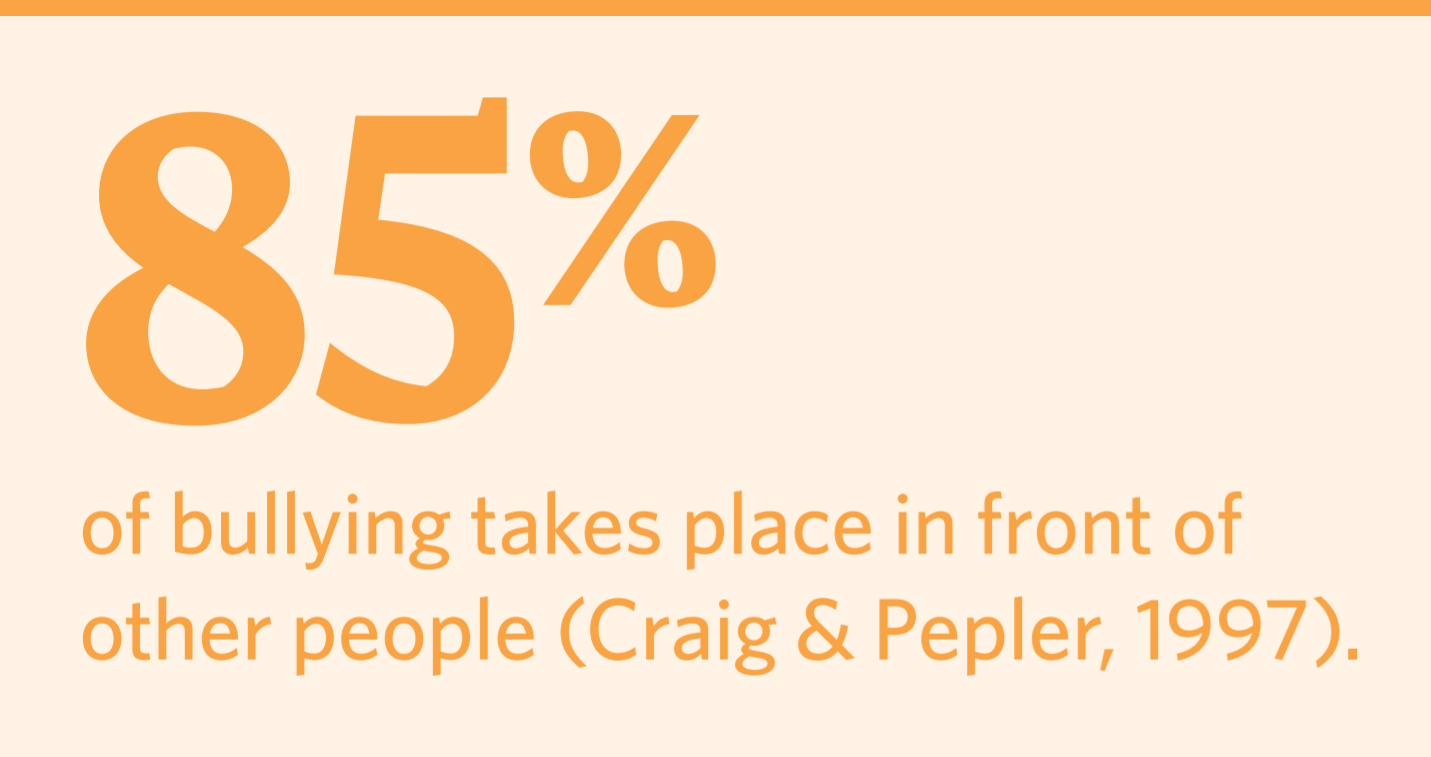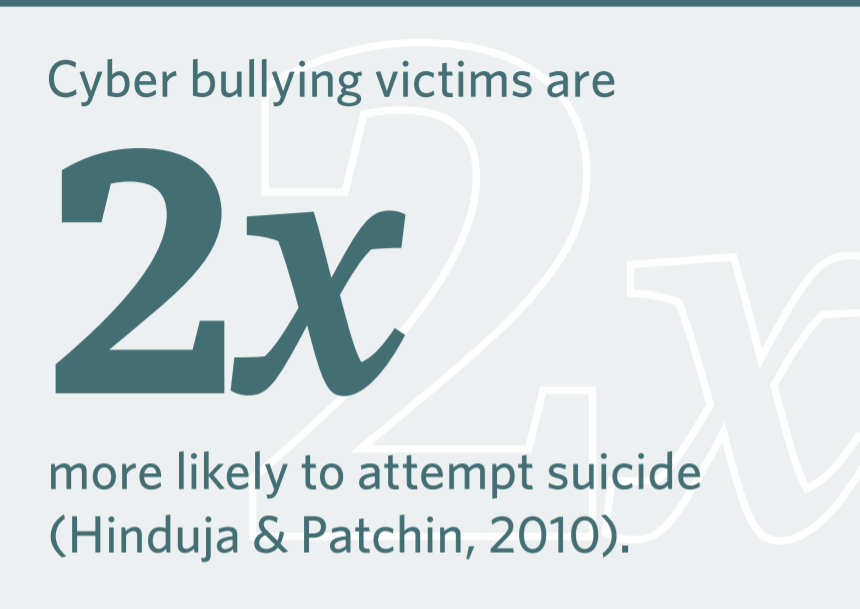If you are in distress, you can call or text 988 at any time. If it is an emergency, call 9-1-1 or go to your local emergency department.
- Fact sheets, Public Resources
Bullying and Suicide Fact Sheet
This resources was published in 2017. The data may be out of date. Bullying is related to negative psychological, emotional and behavioural outcomes. These outcomes can eventually make youth feel as though they can no longer cope (Wade & Beran, 2011). Bullying is linked to several precursors to thoughts of suicide (Hinduja & Patchin, 2010): When bullying is accompanied by other risk factors, it often causes suicidal ideation (Hinduja & Patchin, 2010; Olson, 2012; Holt et al., 2015). Risk factors for suicidal ideation include: Both bullying victims and those who perpetuate bullying are at a higher risk for suicide. Kids who are involved as both victims and perpetrators of bullying are at the highest risk for suicide (Holt et al, 2015, Suicide Prevention Resource Center, n.d). Because of the strong connection between bullying and suicide, the development of bullying prevention and intervention programs is vital (van Geel, et al., 2014). VERBAL BULLYING SOCIAL BULLYING PHYSICAL BULLYING CYBER BULLYING What to do if a youth is being bullied or in emotional distress or suicidal. ADVICE FOR ADULTS – IF A YOUTH IS BEING BULLIED: ADVICE FOR ADULTS – IF THE BULLYING VICTIM IS SUICIDAL: ADVICE FOR YOUTH: FOR PARENTS FOR YOUTH FOR SCHOOLSWhat is it?

Types of bullying

Helping out
Resources
- Fact sheets, Public Resources
Bullying and Suicide Fact Sheet
Bullying and Suicide Fact Sheet
- Children and Youth, Suicide Prevention
This resources was published in 2017. The data may be out of date. Bullying is related to negative psychological, emotional and behavioural outcomes. These outcomes can eventually make youth feel as though they can no longer cope (Wade & Beran, 2011). Bullying is linked to several precursors to thoughts of suicide (Hinduja & Patchin, 2010): When bullying is accompanied by other risk factors, it often causes suicidal ideation (Hinduja & Patchin, 2010; Olson, 2012; Holt et al., 2015). Risk factors for suicidal ideation include: Both bullying victims and those who perpetuate bullying are at a higher risk for suicide. Kids who are involved as both victims and perpetrators of bullying are at the highest risk for suicide (Holt et al, 2015, Suicide Prevention Resource Center, n.d). Because of the strong connection between bullying and suicide, the development of bullying prevention and intervention programs is vital (van Geel, et al., 2014). VERBAL BULLYING SOCIAL BULLYING PHYSICAL BULLYING CYBER BULLYING What to do if a youth is being bullied or in emotional distress or suicidal. ADVICE FOR ADULTS – IF A YOUTH IS BEING BULLIED: ADVICE FOR ADULTS – IF THE BULLYING VICTIM IS SUICIDAL: ADVICE FOR YOUTH: FOR PARENTS FOR YOUTH FOR SCHOOLS
What is it?

Types of bullying

Helping out
Resources
SHARE THIS PAGE
RELATED

Review our Assessment Framework for Mental Health Apps — a national framework containing key standards for safe, quality, and effective mental health apps in Canada.

To help expand the use of e-mental health services, we developed four online learning modules based on our Toolkit for E-Mental Health Implementation, in collaboration with the Centre for Addiction and Mental Health (CAMH).

Stepped Care 2.0© (SC2.0) is a transformative model for organizing and delivering evidence-informed mental health and substance use services.

